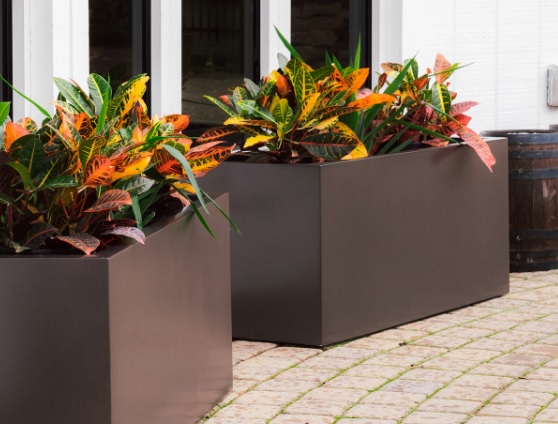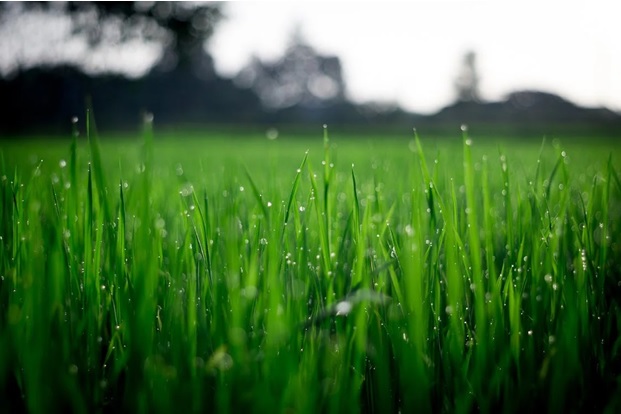Attracting Wildlife to Your Outdoor Spaces
Posted by Jason Wyrwicz on Dec 2nd 2022
Whether you’re looking for ways to make your garden more appealing to native species, or your office simply has a courtyard and you’d like to see more birds and butterflies, the following tips and tricks will make your open spaces more habitable to the wildlife in your areas. Take note!
1. Plant native plants or trees
Ornamentals are great, but if you can, consider planting native trees, grasses, sedges, or flowers. Not only will native plants flourish in your area (nearly guaranteed) but they will provide the best forage and shelter for wildlife.
Ornamental shrubs, flowers, and other plants will also provide food and shelter, but they might not do as well in your climate, and moreover, the ecosystem doesn’t necessarily already have a spot for them. When you grow native, you’re working with plants that already know how to thrive where you live.
Regardless of whether you grow native plants or ornamentals, plants provide tons of resources for wildlife. Plants offer shelter among the leaves and boughs, support insect life (which supports the food chain), and materials in the form of fibers, grasses, and leaves that animals use to make their nests. Many plants will also provide food in the form of seeds, fruit, and roots that animals will directly feed on.
If you don’t have a lot of open space on the ground, that’s no cause for concern, as we sell a wide range of outdoor planters in a variety of shapes and sizes, from large rectangular planters and small pots that can be used to grow a variety of different species.

Also, our pots and planters, from our large rectangular planters down to our smallest, space-saving pots, are made from durable materials that are resistant to high and low temperatures, moisture, corrosion, and more - take a look through our catalog for more information.
2. Provide water
By all means, if you have the space and ability to manage it, add a full-blown pond to your outdoor settings. A pond with a waterfall or aeration pump, even a fish pond, will be a boon for wildlife of all kinds.
Now, that takes a lot of work to maintain, though, as ponds need to be oxygenated, and maintained to prevent algae blooms and other problems. You don’t need to get that serious.
Instead, you can offer something as simple as a bird bath, which will attract everything from birds and insects to chipmunks and even frogs and toads, all of which have an important place in the ecological niches which they occupy.
3. Provide shelter
Growing some native plants in our large rectangular planters, or even smaller garden planter boxes, will account for providing shelter, but there is more you can do than just letting plants flourish. You can also actively create nooks and crannies where other wildlife will flourish.
Let your outdoor decor take a more wildlife-friendly slant. For instance, you can place birdhouses or nesting boxes that will welcome birds into the backyard. You might even choose to construct a bat house, which will welcome bats into your area (bats are big-time consumers of mosquitoes and other pest insects).
There are also insect habitats you can create or purchase, which will encourage bees and other insects to build nests and proliferate. Keep in mind that not all insects are pests; some are beneficial pollinators, like butterflies and bees, and others create food for other wildlife, like the birds.
4. Consider a birdfeeder
While planting native plants will provide forage for many species, you can also consider leaving out a birdfeeder. Depending on where you are in the country, birdfeeders can provide nourishment for birds and other small wildlife like squirrels and chipmunks, especially through the colder, harsher months of the year.
5. Let the grass grow

Unless you’re required to by a building manager or a homeowner’s association, let the weeds and grass grow a bit higher. This creates more habitat for ground-dwelling animals and insects. Plus - cutting back on the landscaping can ease your bills!
6. Cut back on (or eliminate) spraying
Finally, cut back on spraying pesticides or just stop altogether. You’re not running a farm here, and (probably) don’t need to worry about crop production.
Yes, growing flowers and more plants will raise the population of local insects and other critters in your area, but that’s actually quite a good thing.
First off, the vast, vast majority of insects are utterly harmless. Moreover, many of them are beneficial and help pollinate plants.
Also, the other actions you take - such as making your backyard more appealing to birds, frogs, and other wildlife like bats, will counter the need to use pesticides. These other predators prey predominantly on insects, so the friendlier your yard or courtyard is to the local animals, the less you will need to rely on supplementary methods to control insects.
The Benefits of Attracting (Most Native) Wildlife
While it might seem like making your open spaces attractive to wildlife will welcome unwanted visitors like scavengers, mice, and insect pests, this is generally not the case.
Oftentimes, these vermin congregate in areas where refuse and rubbish are left in the open, or where they can actively reach human scraps. Also, much of the time, these are not native species but introduced (as in the case of some species of rodents and insects).
In addition, welcoming native species, many of which are predators, like spiders and snakes, will actually help to eliminate unwanted pests. And, most native species are harmless. In fact, they are beneficial.
Keeping Unwanted Pests Out
Part of creating an oasis for wildlife in your outdoor spaces is limiting the opportunity for pests to thrive. It’s important to remember that some of the tips in this article will not only attract native life but also unwanted visitors.
To keep that to a minimum, make sure you never leave food or garbage out and make sure there is no easy access to waste receptacles, or better, remove them from the setting. Moreover, make sure your home or office is fully sealed and there is no easy way for pests to get in - not just front entrances, either. Check windows, foundations, decks, and patios for gaps and cracks.
Now that you have these tips in your arsenal, you can get to work making your outdoor spaces havens for birds, bees, and blooms!



